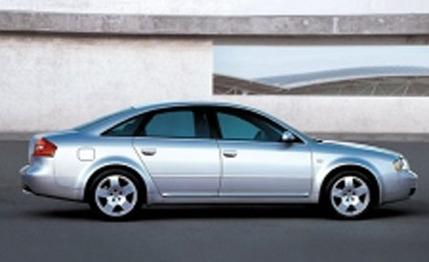
 Short Take Road Test
Short Take Road Test
If something sounds too good to be true, it probably is. This ancient bit of wisdom is usually sound advice. Although there are exceptions-Viagra comes to mind-they're rare, especially in auto technology. Since the first spark plug ignited the automotive era, there's been no end of deluded dreamers and oily con artists bearing inventions promising to double mileage, triple horsepower, and restore lost luster to long-dead Naugahyde. For the most part, it's all so much cold fusion.
So here comes Audi with a new shift-free automatic transmission it claims is better in every way-in fuel efficiency, performance, and engineering elegance-than any other clutchless tranny around. It even has a new name, Multitronic.
Although Audi says it has patented some of the CVT's components, the concept was originally developed by a Dutch industrialist named Hub Van Doorne and appeared on a production model in 1958. Honda and Subaru currently have similar CVTs on some of their econoboxes, but Audi must be credited with being the first company to use a CVT in a high-powered, luxury-level automobile.
As for Audi's other claims, they're confirmed by our testing. We first encountered the Multitronic transmission in an Audi A4 3.0 ( C/D, December 2001), which uses the same powertrain as the CVT-equipped A6. Its 0-to-60 and quarter-mile acceleration times were just 0.2 second off those of an A4 3.0 Quattro six-speed we tested earlier; not a direct comparison, but impressive nevertheless. And the Multitronic's fuel economy was considerably better than the Quattro's, both according to the EPA (city/highway ratings of 19/27 mpg versus 18/25) and our observed mileage (22 versus 20). Mechanically, Multitronic has fewer moving parts than a conventional automatic transmission and, with its lightweight magnesium case, weighs 33 pounds less.
We concluded that Multitronic was " the automatic transmission of today," although we would have preferred a manual six-speed. But in the larger, more mature A6, this is the transmission of choice.
The choice is a tough one, however. The 3.0-it gets its label from a new 3.0-liter V-6 that produces 220 horsepower at 6300 rpm and 221 pound-feet of torque at 3200 rpm-is available with either Audi's four-wheel-drive Quattro system or the Multitronic transmission, but not both. Getting an Audi without Quattro is like ordering eggs Benedict without hollandaise sauce, but at a base price of $35,975, the front-wheel-drive Multitronic is $1750 cheaper, making it somewhat more palatable. A Quattro version of the CVT is under development, Audi says.
It's supposed that most people who choose Multitronic will pop the shift lever in drive, where it will remain for all forward travel. What they'll experience is essentially nothing. The car will accelerate, cruise, and generally perform as smoothly and inconspicuously as an express elevator in a skyscraper. But those who flip the shift lever into manual mode will get six speeds to play with. Audi has programmed the CVT so it becomes a virtual gearbox that can hold a chosen ratio until the driver shifts or the engine hits the redline. It's fun to run through the gears while accelerating, although our tests show getting to speed is actually quicker by simply leaving the lever in drive.
But where the manual mode excels is in quick driving, where one wants to stay within the engine's power band, and for downshifting for the purpose of engine braking on long, winding downhills. The shifts are as imperceptible as switching TV channels with a remote control. Pick a gear, and you're there, instantly.
This smoothness is possible because the CVT transmits the power from the engine to the wheels through a simple arrangement of two pulleys connected by a flexible steel chain made up of 1025 links held together by 75 pins with rivet-head-shaped ends that actually contact the pulleys. The engine's power goes in through one pulley and out the other. The trick is that each pulley is a two-piece unit, V-shaped inside, that's hydraulically controlled to contract or expand according to power demand. This action forces the belt to ride closer or farther from the center, effectively changing the pulley's diameter. As one pulley shrinks, the other grows, and the ratio between them ranges from 2.40:1 to 0.40:1, a ratio-spread factor of 6.00. By comparison, the spread on the A6 2.7T's six-speed manual is just 5.12. To decouple the engine during idle and to engage it in first or reverse, the CVT incorporates a tidy planetary gearset with wet multiplate clutches.
With the CVT, the A6 manages a technological jump on the competition, not that it needs it. Now in its fifth year, the A6 is aging well-it finished second in a recent mid-lux comparison test in its V-8 guise, a tick behind a BMW 540i. It continues to impress with its style, behavior, quality, and mastery of detail. The A6 slots into that most pleasant of automotive grooves-it far exceeds the fundamental requirements of transportation but stops well short of pretension. Although the 2002 model has been warmed over with some mild front and rear restyling, its basic organic design remains as appealing and original as the day it debuted.